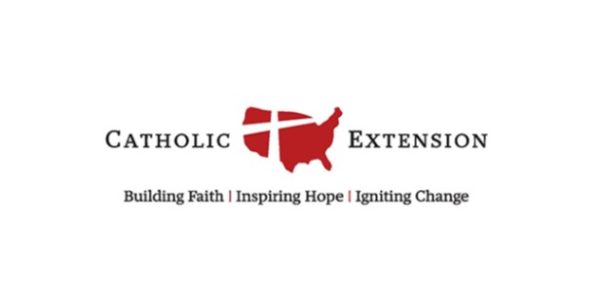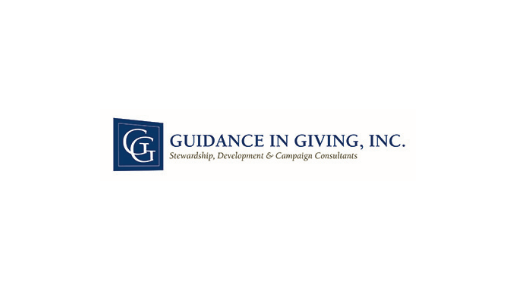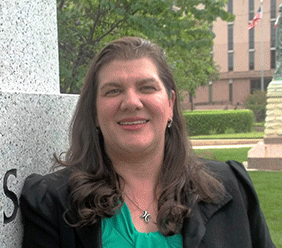Semana 3: Conversación con Dios
A continuación, se muestra el esquema de la enseñanza 3, titulada “Conversación con Dios”. Mientras escucha el video didáctico, siga este esquema. Puede imprimirlo y usar el espacio a la derecha o su propio diario para tomar notas.Las preguntas de discusión se encuentran a continuación de las citas. Si participa en esta serie junto con un grupo, considere seleccionar algunas o todas estas preguntas para su discusión grupal.
Esquema de la Enseñanza
I. Resumen: La oración ocurre en el corazón.
A. Los movimientos del corazón son “movimientos afectivos”, y vienen como pensamientos, sentimientos y deseos.
B. La oración purifica el corazón para que podamos aprender a amar lo que Dios ama.
II. Movimientos distintivos del corazón; tres niveles de nuestro corazón.
A. Los pensamientos, sentimientos y deseos interiores, nos llegan de la experiencia presente o de la memoria.
B. Nivel I (psicológico superficial) – transitorio, incluso superficial, cambio rápido, fácilmente influenciado por estímulos externos (ejemplos: mal humor debido al clima o la opinión de otros). Estos pensamientos, sentimientos y deseos no son movimientos del Espíritu Santo.
C. Nivel II (psicológico más profundo) – más complejo, los pensamientos están más profundamente arraigados, no solo van y vienen, muchos son patrones habituales de pensamiento, sentimiento o deseo.
1. Incluye relaciones familiares, temperamentos, estados de ánimo profundos como depresión psicológica, alegría o felicidad profunda, deseos sexuales.
2. Consuelo no espiritual (sentimiento de elevación) o desolación no espiritual (sentimiento de depresión).
3. Todavía no es el lugar donde Dios habla, aunque Dios a menudo quiere traer sanidad a las experiencias de este nivel del corazón.
D. Nivel III (espiritual): pensamientos, sentimientos y deseos espirituales que impactan directamente en la relación personal con Dios y en el cumplimiento de su voluntad.
1. Tercera regla: Consuelo espiritual (movimiento ascendente del corazón hacia Dios) – “Lo llamo consolación cuando se produce algún movimiento interior en el alma, a través del cual el alma llega a inflamarse con el amor de su Creador y Señor, y, en consecuencia, cuando no puede amar ninguna cosa creada sobre la faz de la tierra en sí misma, sino sólo en el Creador de todas ellas. Lo mismo cuando derrama lágrimas que mueven al amor de su Señor, ya sea por el dolor de los propios pecados, o por la pasión de Cristo nuestro Señor, o por otras cosas directamente ordenadas a su servicio y alabanza. Por último, llamo consolación a todo aumento de la esperanza, de la fe y de la caridad, y a todo gozo interior que llama y atrae a las cosas celestiales y a la salvación del alma, tranquilizándola y dándole paz en su Creador y Señor “. (Ejercicio espiritual # 316).
2. Cuarta regla: Desolación espiritual (movimiento descendente del corazón alejándose de Dios) – “Yo llamo desolación … oscuridad del alma, perturbación en ella, movimiento hacia lo bajo y terrenal, inquietud por diversas agitaciones y tentaciones, movimiento hacia la falta de confianza, sin esperanza, sin amor, encontrándose totalmente perezoso, tibio, triste, y como separado del Creador y Señor. Porque, así como la consolación es contraria a la desolación, del mismo modo los pensamientos que provienen de la consolación son contrarios a los pensamientos que provienen de la desolación. (Ejercicio espiritual # 317).
III. Movimientos espirituales del corazón – pensamientos, sentimientos y deseos.
A. Provienen de uno de los tres espíritus: Espíritu Santo, espíritu maligno, espíritu humano.
B. ¿Qué pasa en el corazón?
1. Llegan los sentimientos y los deseos.
2. Dar lugar a pensamientos (intelecto).
3. Pedir una respuesta (voluntad): recibir lo que es de Dios y rechazar lo que no es de Dios.
4. Entra en nuestro corazón, a través de la memoria, la imaginación y los sentidos espirituales.
C. Esta es una guía, no una ciencia. No todos nuestros pensamientos, sentimientos y deseos se pueden clasificar fácilmente. Esto se ha simplificado a tres niveles.
D. Cuadro
|
Niveles I -III |
Pensamientos |
Sentimientos |
Deseos |
|
Nivel I Psicológico Superficial |
Hace calor |
Acalorado y cansado |
Descanso |
|
Nivel II Psicológico Más profundo |
Soy una decepción para mi familia | Solo, abandonado, deprimido | Quiero escapar de mi vida |
|
Nivel III Espiritual |
Dios ha sido tan bueno conmigo | Gratitud, alegría, calidez | Quiero estar con Dios en oración |
E. Cómo entramos prácticamente en conversación con Dios, sobre algun conflicto en la vida.
1. La oración es la conversación donde le hablo a Dios sobre los problemas o alegrías en el segundo nivel del corazón.
2. Cuando recibo la verdad y el amor de Dios en el tercer nivel del corazón, él comienza a liberarme en el segundo nivel del corazón. Esto comienza a purificar mi forma de pensar y sentir en el segundo nivel del corazón.
IV. Cuatro pasos prácticos para rendir nuestros corazones a Dios.
A. Reconocer: cuando tengo algún conflicto, lo primero que tengo que hacer es admitir que es un conflicto. Esto requiere autoconciencia. Puede ser difícil de reconocer. Puede haber miedo a reconocer, porque no quiero darles demasiado poder a las cosas; creo que es mejor ignorarlo. O porque pienso para mí mismo: si fuera un verdadero cristiano, esto no me molestaría. O porque no tengo la fe para creer que Dios puede trabajar en esta área.
B. Relacionar – El segundo paso es relacionar la situación con Dios en oración y preguntarle a Dios cómo la ve él.
1. Prácticamente, simplemente dígaselo a Dios. “Padre, esto es realmente difícil para mí”. “Tengo miedo.” “¡Esto es demasiado para mí!” “Padre, esto me enoja mucho, ¿cómo puedes permitir que esto suceda?!”
2. Si la enfrento con fe, puedo recibir de Dios una nueva forma de verla. Esta es la parte de la acción de Dios, y no puedo controlar esto. ¡Pero puedo tener fe en que él lo hará!!
3. Relacionar es nuestro trabajo. Recibir es lo que hace Dios.
C. Recibir – El tercer paso es Dios actuando, mostrándome cómo está trabajando. Él habla a mi corazón y me permite recibir su forma de ver, su verdad. Me muestra que está presente.
1. Esta es una consolación espiritual en el tercer nivel del corazón. Puede ser una palabra o frase de las Escrituras. Podría ser una sensación de paz o su presencia. Puede ser una palabra de un amigo o algo que escuche en una homilía.
2. Viene con una elevación del corazón, porque el Espíritu Santo me está hablando.
D. Responder – El cuarto paso es responder de manera diferente, con la gracia y la fuerza de Dios. Puedo responder con verdad y con la paz de Dios. Esto es tan diferente a experimentar ansiedad en la vida cristiana.
E. La oración es una conversación bidireccional
1. Dios obra en la oración. Su presencia entra en las situaciones y las cambia.
2. Dios quiere mostrarnos que es bueno en cada situación cuando se la presentamos en oración.
3. “Bendito sea el Dios y Padre de nuestro Señor Jesucristo, Padre misericordioso y Dios de toda consolación, que nos reconforta en todas nuestras tribulaciones, para que nosotros podamos dar a los que sufren el mismo consuelo que recibimos de Dios”. 2 Cor. 1, 3-4
4. Este recibir, es la clave de toda la vida espiritual: esta es la paz que Jesús promete, incluso en las pruebas más grandes. Verdadera paz que proviene de la verdadera entrega.
F. Ejemplos
1. Jesús en la Agonía del Huerto
2. La espina de San Pablo clavada en su carne (2 Cor. 12, 7-10).
V. ¿Qué es la oración a la luz de RRRR?
A. La oración es el lugar donde me rindo a la voluntad de Dios. Reconozco mi lucha, se la relato a él, recibo de él el cómo poder verla, y luego, puedo responder con su gracia. De esta manera la oración me transforma y purifica mi corazón.
NIVEL I
SUPERFICIE NO-ESPIRITUAL
Pensamientos, Sentimientos y Deseos
NIVEL II
MÁS PROFUNDA NO-ESPIRITUAL
Pensamientos, Sentimientos y Deseos
Consolaciones No-Espirituales
Desolaciones No-Espirituales
Psicológico Primario
Influenciado por
Relaciones Familiares
ADN
Temperamentos Étnicos
Deseos Sexuales
Estados de Ánimo Profundos
Suposiciones Culturales
NIVEL III
ESPIRITUAL
Pensamientos, Sentimientos y Deseos
Consolaciones Espirituales
Desolaciones Espirituales
Movimientos interiores del corazón
causados por diferentes espíritus
Tres espíritus:
Espíritu Santo
Espíritu Maligno
Espíritu Humano
Estos movimientos interiores
llaman por una respuesta:
recibir lo que es de Dios o
rechazar lo que no es de Dios

















 Kimberly Kay Cox
Kimberly Kay Cox







 Mark Mogilka
Mark Mogilka





























 Armando Cervantes
Armando Cervantes Anna Betancourt
Anna Betancourt
 Andrea Chavez-Kopp
Andrea Chavez-Kopp